The 40 greatest synth sounds of all time, No 4: Van Halen - Jump
You know how it sounds, so how do you recreate it?
It seems quite hard to imagine today, but there was once a time when synthesizers were anathema to the rock ‘n’ roll cognoscenti. Yet that was precisely the case when hard rock legends Van Halen issued Jump at the tail-end of 1983.
To understand its impact, one must consider the era into which it was released. This was a time when hard rock and heavy metal acts hid their synth players from audience view. Synths were seen as ‘pop’ instruments, preferred by purveyors of pop or ‘New Wave’, and hardly suitable for the macho posturings of the typical hirsute metalhead.
Bands like Rush and Asia were garnering airplay with synth-laden tracks, but they were intellectual outliers who took their cues from the long-dormant progressive rock movement.
Van Halen, on the other hand, were rough ‘n’ ready rockers, more stomp than pomp. Given the band’s image-conscious attitudes, it’s no surprise that Eddie Van Halen’s now-classic synth riff was rejected by his bandmates when he first demoed it in 1981.
It would be re-presented to frontman David Lee Roth by producer Ted Templeman some two years later. This time, Roth responded positively, initially inspired by a news report of a would-be suicidal jumper and the encouragement of less-than-compassionate onlookers egging the poor subject on.
Roth wisely reconsidered, and the lyrics became a joyous, jubilant invitation to embrace life’s opportunities. This was much more in keeping with Van Halen’s optimistic approach and in line with the buoyant backing tracks.
Jump might have been one of the band’s poppiest moments up to that point, but they were still rockers through and through, and a Van Halen synth riff needed to be big, brash, and bold.
Get the MusicRadar Newsletter
Want all the hottest music and gear news, reviews, deals, features and more, direct to your inbox? Sign up here.
Fortunately, Eddie had one of the boldest in his studio – Oberheim’s OB-Xa, a beast of an analogue polysynth that could hold its own with the band’s barrage.
Their risk was rewarded. Jump topped the Billboard charts and was accompanied by an award-winning video.
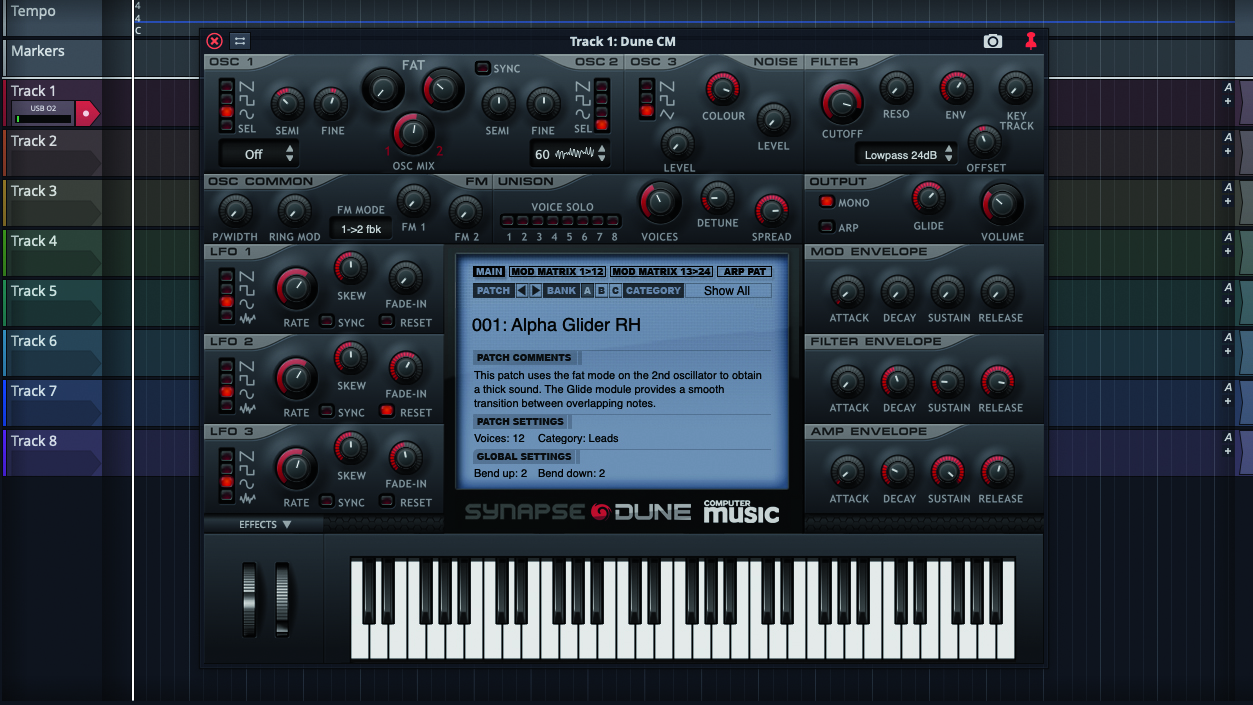
Step 1: Of all the sounds on our list, this is one of the easiest to recreate. The original was made with a much-vaunted vintage classic, though it hardly taxed the abilities of the original. However, that instrument – Oberheim’s OB-Xa – had a certain imprecision that made it sound huge. We’re going to attempt to approximate its burly sound with Dune CM.
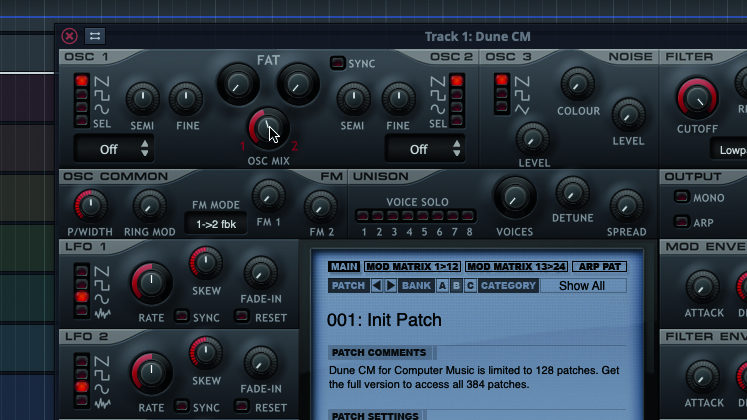
Step 2: Going to the Dune’s central display, we’ll click the button accessing the B Bank, calling up an initialised patch. Play a simple chord. It’s none too exciting, though it offers a hint at what it might become. Looking at the oscillators, we see that they are set to produce sawtooth waves – just what we want. Set the Osc Mix to about 11 o’clock.
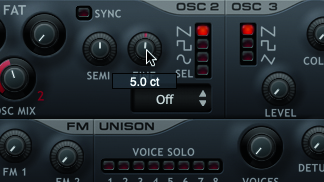
Step 3: The old OB-Xa had only two oscillators, but each of its eight voices was essentially a complete individual synth voice, and discrepancies in calibration meant they all sounded slightly different, making for massive chords. We can simulate some of that in Dune. We’ll start by setting Osc 1’s Fine tune to -5.0ct and Osc 2’s Fine tune to 5.0ct.
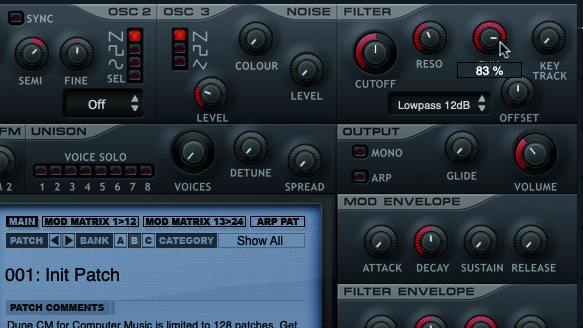
Step 4: We’ll push Osc 2’s Semi knob up to +12 (an octave), and we’ll raise the Level of Osc 3 up to around 26%. You might need to re-adjust this later – we’re just using it to add a bit of girth. In the Filter section, we’ll set Cutoff to 50%, and push Reso up to 42%. We’ll shove the filter’s Env knob up to around 83%.
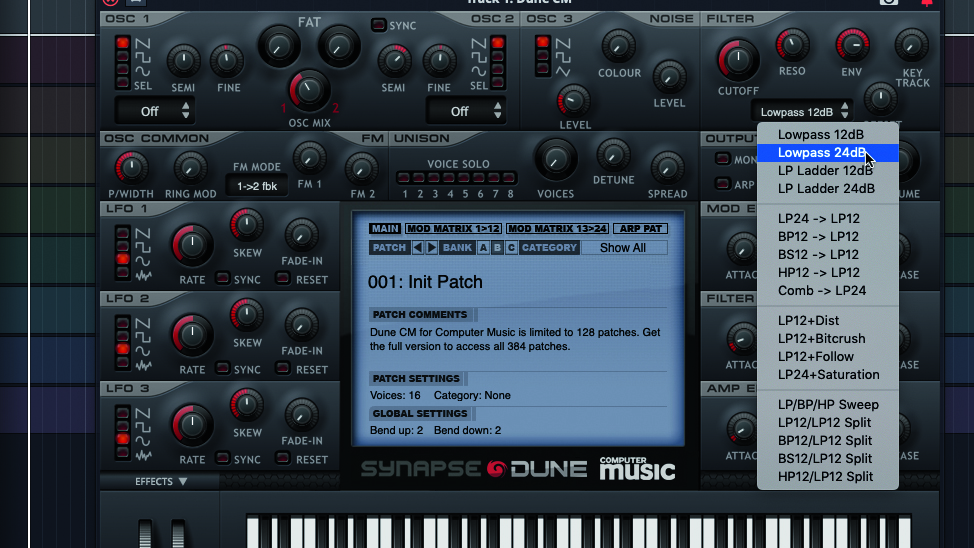
Step 5: We need to create a slightly brassy overall shape. We’ll go to the Amp Env, and set its Attack to 7% and Release to 24%. Moving up to the Filter Envelope, we’ll set the Attack to 12%, Sustain to 76% and Release to 19%. This is a little closer, but perhaps we need to switch the Filter mode to Low-pass 24dB.
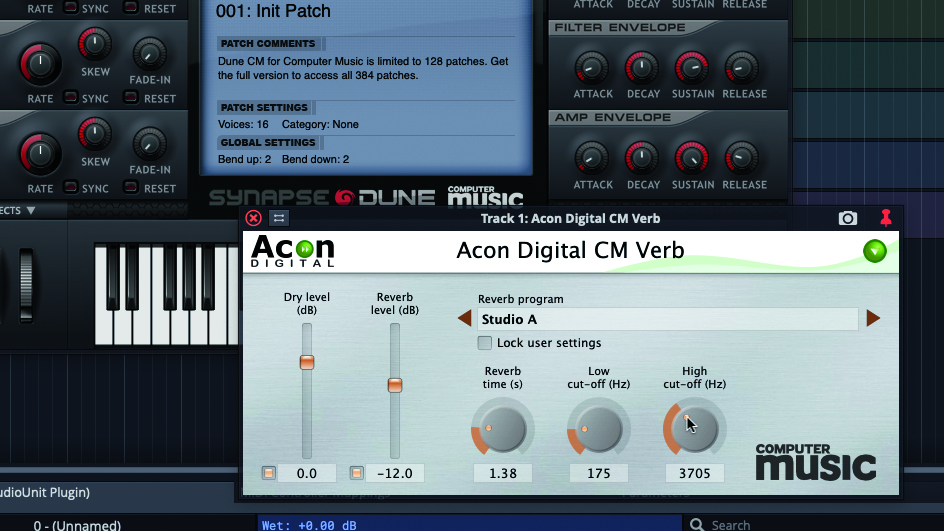
Step 6: Finally, let’s top it all off with just a touch of reverb, courtesy of Acon Digital CM Verb. We’ll choose the reverb program called Studio A, and give its settings a little tweak, adjusting Reverb time, as well as the Low and High Cut-off values. Now we’re ready to don some spandex and jam out some block chords!


Computer Music magazine is the world’s best selling publication dedicated solely to making great music with your Mac or PC computer. Each issue it brings its lucky readers the best in cutting-edge tutorials, need-to-know, expert software reviews and even all the tools you actually need to make great music today, courtesy of our legendary CM Plugin Suite.
“Excels at unique modulated timbres, atonal drones and microtonal sequences that reinvent themselves each time you dare to touch the synth”: Soma Laboratories Lyra-4 review
“A superb-sounding and well thought-out pro-end keyboard”: Roland V-Stage 88 & 76-note keyboards review










